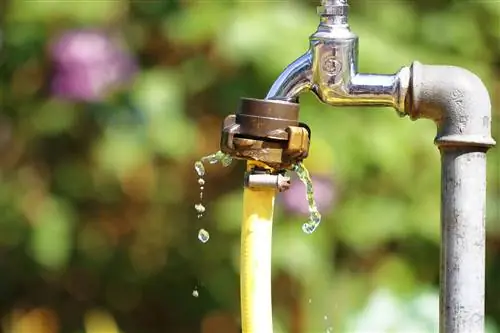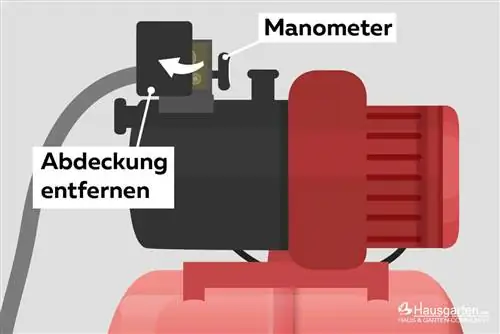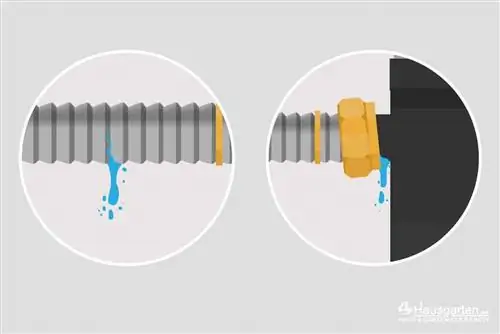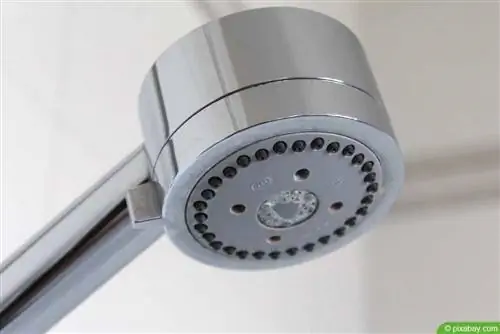- Author admin [email protected].
- Public 2023-12-17 03:39.
- Last modified 2025-06-01 06:48.
If there is no longer enough water available in the pressure vessel of a domestic waterworks, the pressure must be increased. The following guide shows how the setting can be made.
Minimum and Maximum
The domestic waterworks is a system that is regulated, among other things, by two settings: the minimum pressure and the maximum pressure.
If the minimum pressure is not reached, additional water is pumped. How much and how quickly the water is pumped depends on two factors. On the one hand, the size of the pressure vessel. On the other hand, the difference between minimum pressure and maximum pressure. The greater the difference between the two pressure settings, the more water can be pumped.
Lowering the minimum pressure and increasing the maximum pressure can therefore increase the delivery rate.
A few points should be taken into account:
- Minimum pressure or switch-on pressure should be between 1.0 and 2.0 bar
- Ideal pressure must be determined individually
- Maximum pressure is optimal between 3 and 4 bar
- Use a pressure gauge or pressure gauge for checking
- It is important to pay attention to the manufacturer's information
- Print settings may vary depending on model
Tip:
The ideal switch-on pressure is usually 1.5 bar. However, it is necessary to adapt the pressure to the respective conditions in order to keep the water column at the appropriate level.
Settings error
If there are setting errors, various problems can occur. These can also be an indication that the pressure is too high or too low. These factors include, among others, the following points:
- the domestic waterworks no longer switches off, but runs continuously
- no water is attracted
- the delivery rate is too low
- the membrane between the two chambers of the pump can be damaged
By checking the pressure gauge you can quickly determine whether the pressure is in the optimal range or should be increased.
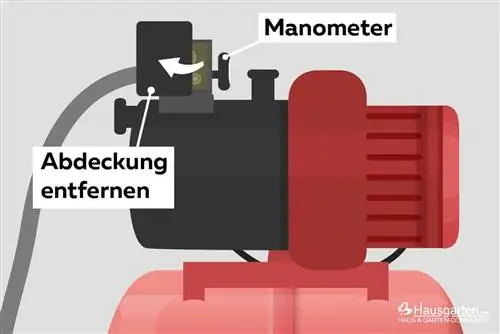
Increase pressure - instructions
In order to vary the pressure or the difference between the settings, the manufacturer's instructions must be followed. However, all that is usually required is the following steps:
- The pressure adjustment screws are located under a cover on the so-called pressure switch. The plastic cover must first be removed.
- There are two screws behind the cover. As a rule, the large screw is the switch-on pressure or the minimum pressure.
- The pressure can be increased by turning the screws. The pressure gauge must be checked during the adjustments and afterwards.
- Finally, all you have to do is put the cover back on.
A few factors are crucial when increasing pressure. The following points are important:
- Observe manufacturer’s instructions
- Lowering the minimum pressure also increases the delivery rate
- the settings should neither be below 1 bar nor above 4 bar
- Increasing pressure should ideally be done gradually
Tip:
If there seems to be a lack of pressure, defects in the line or other problems could also be responsible. Preventing a loss of pressure may therefore be a better measure.
Prevent pressure loss
Various measures are recommended to prevent pressure loss. These include:
- regular maintenance
- professional installation
- frequent cleaning and filter changes
- Checks of pipes, seals and connections
- appropriate selection of the domestic waterworks for the corresponding delivery depth
Tip:
Especially after changing the filter, the pressure should be checked carefully and adjusted if necessary.


